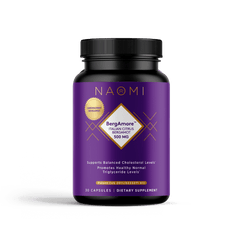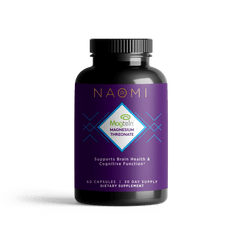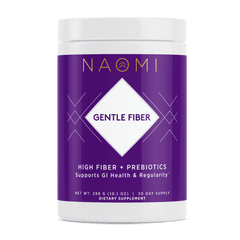Advanced Keto Diet: What You Should Know
Last week’s blog addressed three top questions that keto beginners should ask before starting a keto diet. As promised, this week’s blog will similarly provide ‘should ask questions’ to individuals who already have a keto foundation and have followed a high-fat, low-carb diet.
Mastery of any skill is a multi-step process that occurs over weeks, months or years depending on the starting point and desired outcome. It’s a continuum made up of a series of independent goals and successes, each one building upon the last.
In keto as in life, learning and growing does not stop once you understand the basics. A large percentage of individuals have discovered keto as a result of a news headline or in conversations with friends or colleagues about weight-loss. In fact, losing weight is one of the top reasons why men and women join try keto for the first time.
But somewhere between the starting point and final goal weight, something interesting happens… many of them discover that keto has the power to do so much more than promote weight and fat loss. They learn about other wellness practices, activities, benefits and terminology that have a connection to keto, such as autophagy, intermittent fasting, metabolic syndrome, disease prevention and ‘de-aging’.
If you fall into this advanced keto category, you are apt to your share of mistakes and pitfalls as you venture deeper into a practice and lifestyle with decades of research supporting its positive effect on cellular health. It is because of this greater depth of knowledge that it is important to know what to expect.
If you are ready to take your keto practice to a higher level, here are three important questions you should ask.
#1: Do I have to do intermittent fasting on keto?
Fasting — the practice of abstaining from eating food or drinking beverages other than water for a period of time — is often done in observance of a religious event or ahead of a medical procedure.
Intermittent fasting, often referred to as IF, is where you cycle between periods of eating and fasting over the course of a day or a week — and according to scientific research, it plays a very crucial role in keto and in the treatment of many illnesses.
IF has a symbiotic relationship with keto, because both practices lead to the formation of ketones as a response to the depletion of glucose, the body’s primary source of energy given the option between macros (carbs, fat or protein). It takes the body time to burn through sugar stores, during which insulin spikes, cuing up cravings, to encourage you to replenish those lost carbohydrates.
Once in ketosis, however, the release of insulin and other hormones stabilize as the body settles into the job of burning through fat stores instead. And because of the rich, satiating fat that contributes to this fat-burning function, cravings and hunger subside during periods of intermittent fasting… which should quell the common fear that you will “starve” if you fast.
In fact, you are more likely to experience hunger if you fast while eating carbs, because of the insulin spikes that both simple and complex sugars cause to varying degrees.
With ketosis actively underway during periods of intermittent fasting, the body is free to release stored fat and use ketones to fuel the body and brain, which is why many individuals describe a boost in energy and mental alertness despite fasting.
An easy way to fast is by adopting a 16/8 approach — where you begin fasting after dinner and break it at noon, or 16 hours later, at lunchtime. Be sure to break your fast with a fat-rich meal to help maintain ketone production.
#2: How do I activate autophagy?
Prior to trying keto, you may not have heard about the all-important, cellular detoxification process of autophagy, by which the body eliminates toxic buildup that inhibits normal, healthy function. If left unchecked, this accumulated waste can create a perfectly imperfect environment that diseases depend on to survive.
While the body is designed to do this cellular housekeeping on its own, its ability to do the job effectively can be hampered by a range of saboteurs, such as processed foods, unhealthy cells, environmental toxins, and low quality of sleep among other things. Thankfully, you have the resources to support autophagy within your body.
One of the best ways to activate cellular cleansing was described above: intermittent fasting. When you go extended periods without food, your body becomes stressed in a positive way, which triggers autophagy. Your ability to prevent chronic disease and live a long, active life depends on this process. In addition to supporting ketosis, IF allows cells to detoxify without disruption from other functions, such as digestion, that compete for energy and other resources.
If you’re a snacker accustomed to eating every few hours, your cells have a limited window of opportunity to dedicate to repairing themselves and eliminating accumulated waste. There simply is not enough time to complete the job.
In the same way that eating a heavy meal before exercising diverts blood flow from muscles to digestion, eating frequently does not allow enough time for autophagy to occur properly. Fasting is like hitting the reset button on your cells. Research suggests that 16 hours of caloric restriction is the optimal amount of time for cells to engage in self-care and cleansing.
#3: Should I do a cleanse prior to starting on a keto cycle?
One of the goals of keto is to gain the metabolic flexibility of burning energy efficiently from both carbohydrates and fat. You do not and should not stay in ketosis “forever.” Nor do you do keto once and expect your health and body to be restored to factory conditions. This is why keto is a lifestyle and a practice you cycle through, like intermittent fasting.
Prior to getting into keto, it is strongly recommended that you take one week to use diet and gentle physical movement to detox in preparation of ketosis. Doing so helps restore balance among five organs of elimination: colon, liver, kidneys, skin and lungs. These powerhouses are designed to work harmoniously to separate good substances from bad substances to keep the body in a state of equilibrium.
If the function of one of these organs becomes compromised, the body can get exposed to a higher level of toxins than it can accommodate. In the worst case scenario, the toxic burden can be a contributing factor to developing age-related conditions and chronic diseases. At best, you may feel unwell and unhealthy.
As Hippocrates stated, “Let food be thy medicine and medicine be thy food.” In my book, Glow15, I outline a two-phase approach to using food to detoxify and prepare for the good stress of ketosis:
- Phase 1 – The liver undergoes reactions that release toxins. Think of this phase as filling up a bathtub with all the unwanted toxins you want to get rid of.
- Phase 2 – In this phase, you drain the tub in a process that provides toxins with molecules to attach to and be evacuated.
It is not particularly pleasant for these toxins to be released from the body (for example, through the skin and colon). But, it is an important step to achieving a healthy, metabolically flexible body that defies aging.
Scan through our social media posts and you will see dozens of posts from individuals at different stages in the keto journey — some of them have been on it for years and share inspiring stories of advancement and transformation. Because no two journeys are alike, there is an assortment of keto Q&As. If you have a topic you want to learn more about, please post it on this thread. I look forward to hearing from you.













